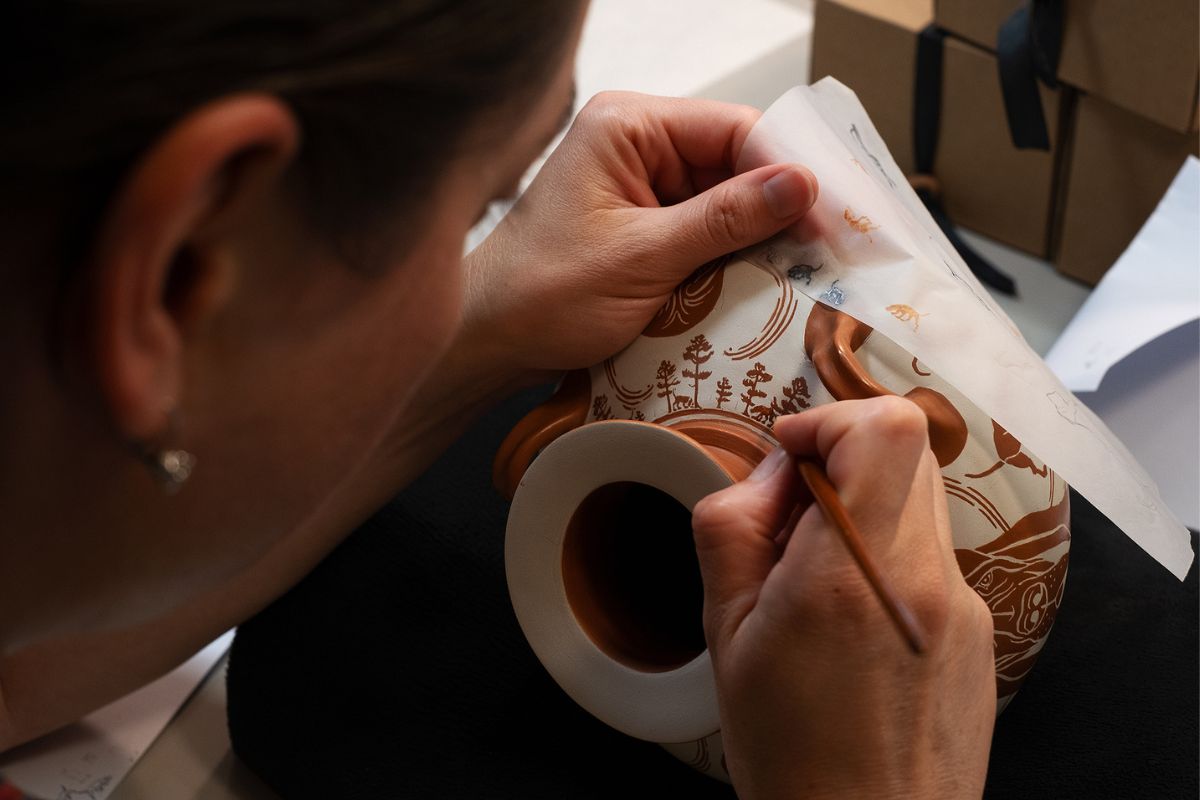
Ancient Greek Vase Painting shows the stories, daily life, and artistic evolution of ancient Greece through its pottery designs.
Key Highlights
- Discover the evolution and impact of ancient Greek vase painting, ranging from the Bronze Age to the classical period.
- Learn about groundbreaking techniques, such as firing processes, clay preparation, and artistic styles.
- Explore principal vase painting styles like geometric, black-figure, and red-figure techniques, along with their chronology.
- Uncover how ancient Greek vase painters illustrated mythology, everyday life, and religious practices.
- Learn the legacy of Greek pottery’s craftsmanship on Western art and archaeology.
- Gain insight into scholarly research and conservation efforts, including breakthroughs in the past decades.
Ancient Greek vase painting is at the heart of Greek art and life. The ancient Greeks used the vase to show everyday life, their stories from myth and religion, and their skill in art. The painted terracotta pottery from that time gives us a look into what people did every day and what they believed. There are simple geometric patterns from the Bronze Age, and later, people in Athens made much more detailed red-figure vase designs. Over time, ancient Greek pottery painting changed as people added new craft ideas and skills. Today, many people still want to learn more about Greek pottery. It helps us see the history, art, and archaeological story of those years.
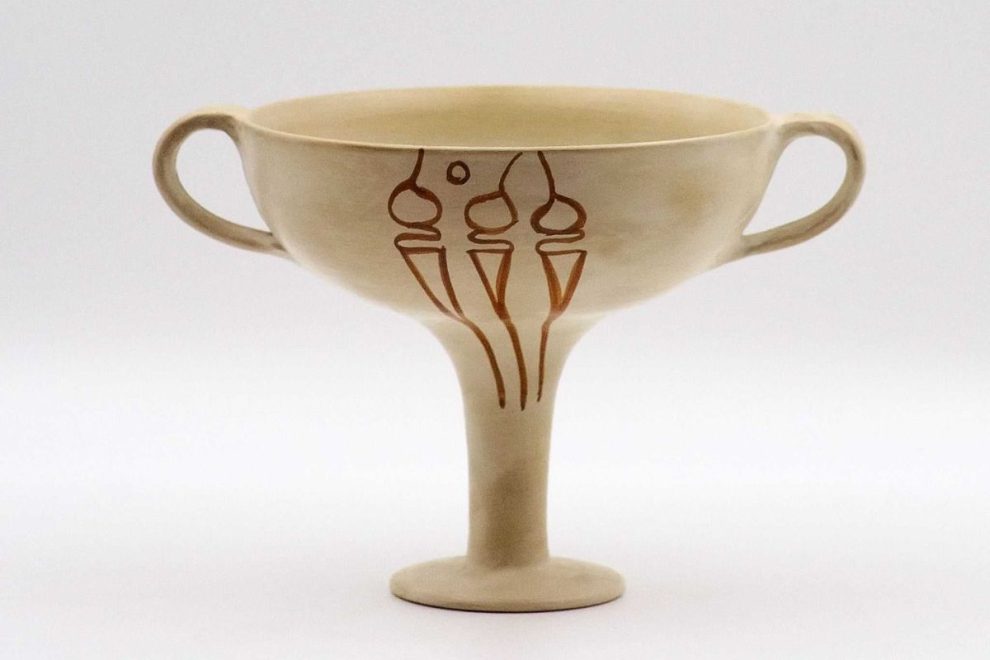
Origins and Historical Context of Ancient Greek Vase Painting
Ancient Greek vase painting began in the Bronze Age, a time when clay pottery was used every day in the Aegean world. In the early days, potters made useful vases and decorated them with easy, repeating motifs and simple geometric shapes. As the civilization in ancient Greece grew, vase painting changed too. During the Geometric period and the times after, you could see more detailed designs and scenes from myths on the pottery. By the classical era, vase painting in Greece became more advanced. This craft was now an important art form. The change showed how the culture, society, and economy in ancient Greece had also changed over time.
Early Pottery Traditions in the Aegean World
The craft of clay pottery began in the bronze-colored lands of the Aegean region. People living by the coast used the plenty of natural clay found there. In the Bronze Age, they made things like pithoi and amphorae from clay. These were used for holding and keeping things. The designs were mostly basic shapes and lines, made to be useful and easy for storage. The ways they made pottery showed what their groups valued back then, and you could see this in each region’s wares. In Cycladic pottery, people started using abstract motifs and patterns on items for daily use. The pottery they made was not only for using but also had designs that showed who they were as a community.
As time went on, there were more improvements in pottery because of better skills and new ideas. Potters in Crete and other places learned how to make the clay smoother, change its shape, and fire it in new ways. This made their pottery stronger and better-looking. Their work with clay pottery set the basics for all the pottery made in the years after and these traditions have lasted a long time.
Influence of Minoan and Mycenaean Cultures
Minoan and Mycenaean cultures played a big role in shaping early Greek pottery in ancient Greece. The look and style of their pottery set the standards for what was to come. On Minoan vessels, it was common to see motifs inspired by nature. There were many patterns that looked like sea life, flowers, and simple spirals. These designs fit well with the peaceful and sea-based life on Minoan Crete. Mycenaean pottery was quite different. Their motifs often showed themes from war and hunting. You could see pictures of shields, chariots, and spears on these vessels. The lines and patterns on their pottery also matched the structure and warrior values of Mycenaean Greece.
Both Minoan and Mycenaean cultures helped change the ways people made ceramic pieces. They came up with new firing and production techniques. Greek pottery, over time, took these methods and improved them. As the Bronze Age moved on, ideas and designs from different places mixed together. This change helped pottery in Greece to grow and get new artistic styles, leading up to new look in later periods.
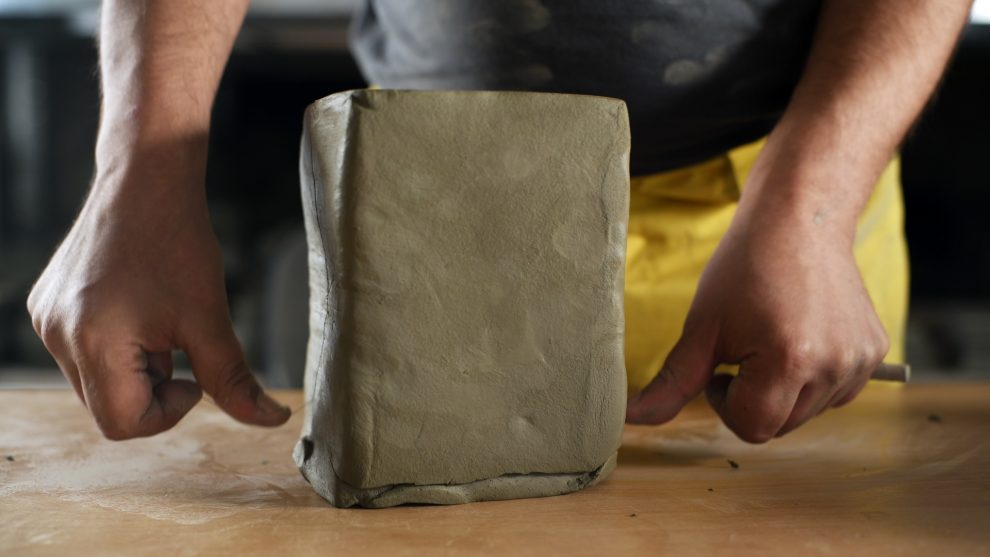
Materials and Techniques Used in Greek Vase Production
Ancient Greek potters used a complicated firing process to make their famous red and black finishes. They picked terracotta clay because it gave the pottery those bright colors. Having a good clay mix with no impurities helped make sure the pots looked shiny and smooth. Potters in Greece also improved their kilns. This let them control the oxygen during firing, which made the pottery stronger and better-looking. These firing process skills in Greek pottery were important. They helped Greece build a big name in art and led to new ways of making pottery for many years.
Selection and Preparation of Clay
The making of Greek vases started with picking the right clay. In Greek pottery, potters knew that getting rid of impurities was important. If they did not, the pots could turn out rough or break during firing. One way they did this was by mixing clay with water. The heavy impurities would sink to the bottom, and potters could take them out. Once the clay was ready, it was soft and easy to shape. This made it possible to form things like amphorae, kraters, or small vessels. After making the shape, the potter would rub the surface with a smooth stone or leather. This helped Greek vases look good and also made them strong. The way Greek pottery was made showed the skill of each potter. Terracotta had qualities that helped make every piece even, yet each potter or Greek region could make it look a different way. This mix of science and the potter’s hands is a big part of why Greek vases and pottery still amaze people today.
Firing Methods and Kiln Innovations
Greek potters used a smart three-step firing process to get the well-known black and red look in vase painting. At first, they put the vase in a kiln full of oxygen and fired the clay. This made the outside of the vase turn red. In the next step, the temperature went up again, and they put green wood or sawdust inside. This sealed the kiln and took away the oxygen, so some parts of the vase became black, while the painted areas stayed red. The firing chamber had vents. These controlled how much oxygen got in and helped give good results every time. In the last step, oxygen was let back in. This changed the unpainted areas back to their normal red color, while the black parts kept their shiny look.
Athens and Athenian potters were very good at making better kilns for this process. Their workshops made kilns with round openings, which made it easy to work with them and always get the same colors. This skill with the firing process set Greek vase painting apart. Over time, it changed the world of ancient art and still means a lot to modern art today.
The Science of Color in Greek Vase Painting
Greek vase painters made big changes in the way color was used in vase painting. To get the well-known black slip, they used liquid clay that was cleaned very well. This clay turned shiny when the vase was fired in the kiln. Vase painters used different brushes for the details in vase decoration. When they mixed the slip with water, they could show texture with layers. This new way to paint helped them show small details, like muscles or clothing, on red-figure vases. The mix of red-orange terracotta and black slip in Greek vase painting was used to show different feelings and give meaning, called iconography, to their stories and art. The way they chose and used these materials made vase decoration even more important in Greek art.
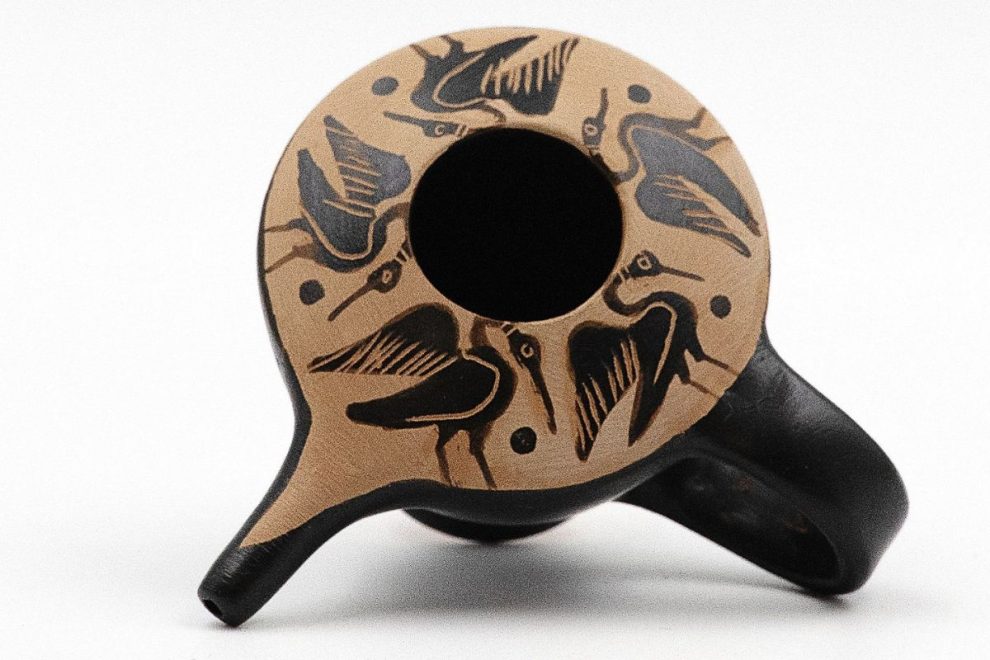
Principal Styles of Ancient Greek Vase Painting
Ancient Greek vase painting changed a lot over time. Each period had its own look and way of doing things. At first, artists used geometric patterns. They put these simple and neat motifs on vases like amphorae and kraters. After that, the black-figure style came in. Painters could draw fine details in the black slip. As they got better at their work, the red-figure style took over. This way, painters could show more life and shape in what they painted. The changes in Greek vase painting over the years show what people liked, and how stories on these vases changed in Greek art through its long history.
The Geometric Style
The Geometric Period (900-700 BCE) changed ancient Greek pottery. During this time, potters began to use bold geometric patterns and balanced designs. Amphorae, kraters, and bowls turned into spaces to show off many geometric motifs. You could see zigzags, spirals, and even simple shapes of people on these pieces. Some old vessels, like the amphora from the Dipylon Cemetery, show funeral scenes. Artists painted abstract pottery shapes and people showing grief. The geometric patterns on ancient Greek pottery matched how their society was organized. These designs helped people connect decoration with history and chronology. Symmetry was very important in Greek vase painting at the time. Potters often used tools like compasses to make circles and keep the patterns even. Their early work with shapes and designs helped start new ideas for future vase decoration and pottery in Greece.
The Black-Figure Technique
The black-figure technique changed the way people saw ancient Greek vase painting. This way of painting was common between the 7th and 5th centuries BCE. It was all about showing dark shapes of people and animals on vases, like amphorae and kraters. People could make more details by scratching the surface and letting the orange terracotta color show through. These incisions helped add all kinds of patterns. Painters used a black-slip mix that let them try different things. People started to add new, complex stories from everyday life and also from ancient myths onto these vases. Artists in Athens, like Exekias, really brought the art up to new levels. They showed their skill in making body shapes and actions look right. Pictures like “Ajax and Achilles playing a game” stand out as well-known examples of their work.
Using both scratching and painting on the vases made the pottery look full of life. Artists also showed the difference between men and women by painting women’s skin in white, while they kept men’s skin a reddish shade. This helped bring out some of the cultural ideas from that time. These paintings and little changes let us see a lot about Greek vase painting, pottery, and their daily world.
The Red-Figure Technique
Invented in 525 BCE, the red-figure way of vase painting changed how artists worked on a vase. Instead of making the human figures black, painters kept the people unpainted with a dark background, using their brush to add detail instead of cutting lines into the clay. With this new style, artists could show body shapes, faces, and movement in a better way. There was more room to show what the human figures could do and to have them look real. Painters like Euphronios used it to give the people in the art a real-life look. Some of the most famous vases, like a kylix cup, let the artist show stories from myths and also what Athenian life was like every day.
When the red-figure style showed up, it meant artists wanted the vase to tell a bigger story. It also helped them use new ways to show space, action, and the order of things. This style of vase painting carried on helping artists for many years after it started.
How did the Techniques of Black-Figure and Red-Figure Painting Differ?
The black-figure and red-figure styles of pottery showed strong differences. Black-figure used lines cut into the surface, while red-figure let artists use a brush for more control. These ways of working made each style significant when showing stories.
| Feature | Black-Figure Technique | Red-Figure Technique |
| Figures’ Base Color | Painted black shapes | Left the terracotta color showing |
| Detailing Method | Cut designs into a slip on top | Used a thin slip to add details |
| Storytelling Approach | More simple, focused on strong outlines | More complex, showed real body shapes |
| Chronology | Was common from the 7th to early 5th bce | Was popular from late 6th to 4th bce |
Both styles gave artists the chance to make their work stand out. They helped share the ideas and stories of their people with each new year, showing how strong cultural narratives could be told using pottery.
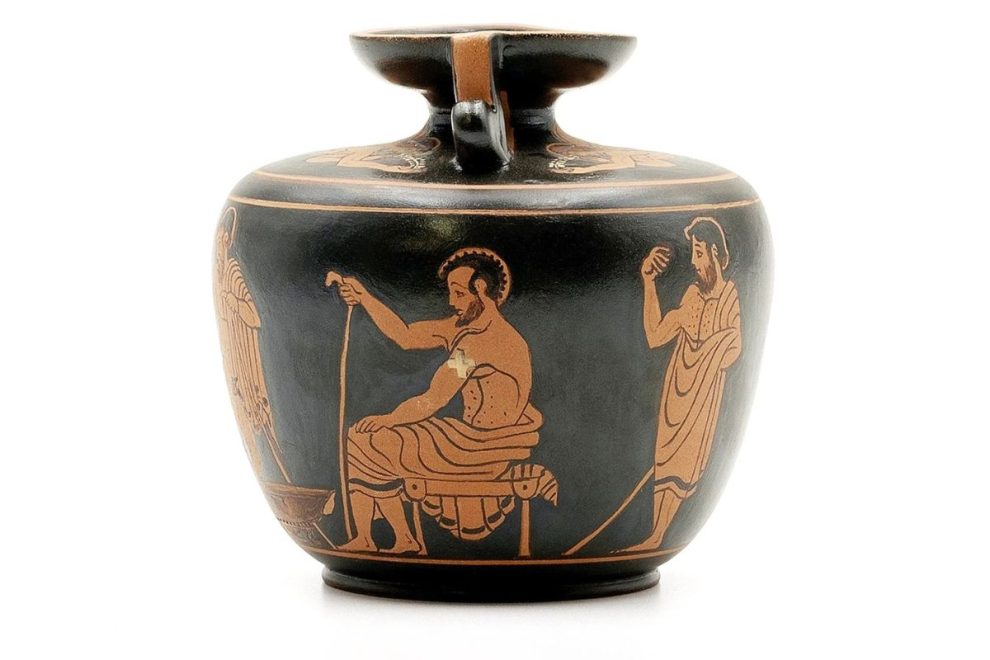
Iconography and Subject Matter
The iconography you see in ancient Greek vase painting shows many different things. Greek vase painting is full of stories about gods and daily life. There are famous motifs, like the brave acts of Heracles and the amazing moments of gods such as Zeus. These tell us a lot about how much the ancient Greeks respected these old stories. The pottery also shows very detailed designs, with lots of human figures and strong geometric patterns. By looking at this vase painting, you can see what the Greeks thought was important in their way of life. The designs show how people in that time saw the world around them, including both the gods and normal daily life. The pottery and these motifs help us know more about the values, traditions, and rituals that were part of Greek culture.
Scenes from Mythology
Stories from mythology often show up in ancient Greek vase painting. These pictures help us see the strong bond the art had with what the ancient Greeks believed. People could see well-known characters like Zeus, Heracles, and Dionysus on the vase at big moments showing what they could do as gods. The detailed iconography was there to do more than just look good. It was made to teach people lessons about morals and to tell the story of human life. Bright motifs and clear inscriptions on the vase help tell the deep stories in Greek mythology. This way, Greek vase painting helps us get the full picture of what was important to Greek people back then—their culture and religious values—right through the years.
Depictions of Daily Life and Rituals
Everyday life in ancient Greece is shown well through the pictures on vases. These designs display not just home life. They also cover key rituals and big ceremonies that helped shape Greek culture. You can see athletic contests and also festivals for gods such as Apollo and Dionysus. The vase motifs show what people valued and the rules they followed. The use of bright colors and geometric patterns in the decoration adds to these stories. This lets people today look deeper into what these shared events meant and how ancient Greeks lived each day. The iconography on these vases gives us a good look at life back in Greece.
What can the Study of Ancient Greek Vase Painting Reveal about Ancient Greek Religion?
Looking at ancient Greek vase painting helps us learn about the religion and beliefs of the people back then. These vases often show the gods, religious acts, and stories from myths. When we see these pictures, we find out about what was important to the people and how religion was part of their everyday life. Greek vase painting gives us a way to see how people understood their gods and their faith during that time.
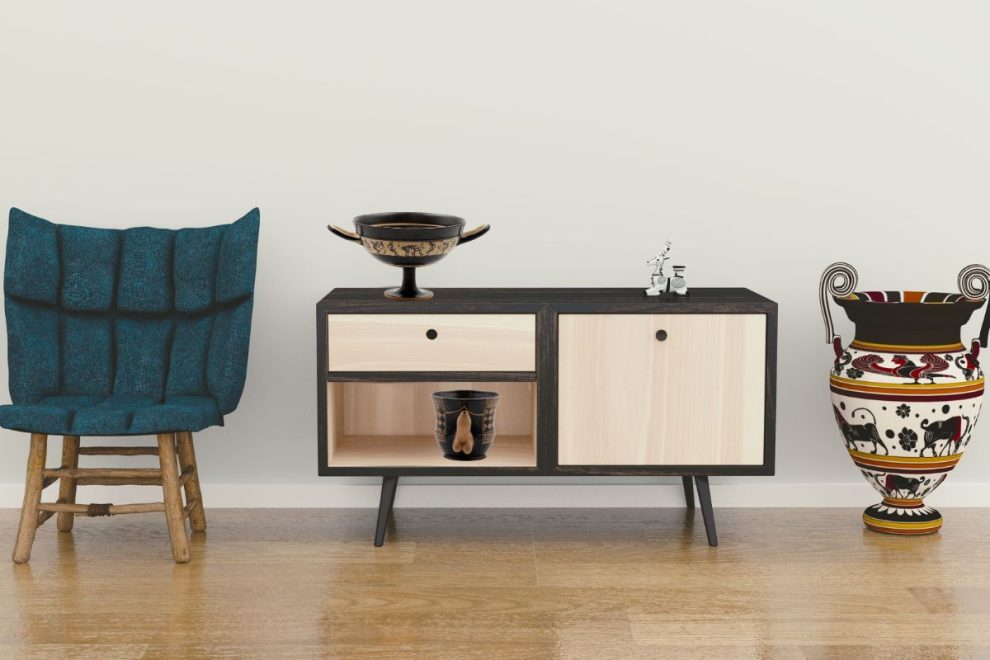
Functions and Types of Greek Vases
There were many types of Greek vases in ancient Greece. Each type had its own job. People used some of these vases every day to hold things like oil or wine. These vases often showed geometric patterns and pictures of people, which gave a look into daily life in Greece. Other vases were used in ceremonies or funerals. These played a big part in important rituals. They helped link people to their gods. The iconography on these vases showed gods and famous myths. This art helped share what people in Greek society believed and valued. The detailed scenes and symbols on the vases show the strong bond between daily life and tradition in ancient Greece.
Vases for Domestic Use
Household vases were important in the daily lives of ancient Greeks. The people used these vases for both useful and artistic reasons. Many of them had geometric patterns or bright images of human figures. The vases were used to hold olive oil, wine, and water. There were different shapes, like amphorae and kraters. This shows the focus was not just on use, but also on the look that people in ancient Greece liked in their homes. By studying these simple items, we can learn a lot about the way of life in ancient Greece. This helps people today see the culture and social ways of the people back then.
Ceremonial and Funerary Purposes
Ceremonial and funerary vases were key in the rituals of ancient Greeks. These vases showed the deep beliefs that people had at the time. Potters shaped these vessels with great skill. The vases were used in burial rites, and people placed offerings for the dead inside them. You will often see that their iconography showed stories about gods like Dionysus or Zeus. This helped connect the living and their belief in the gods. Vases such as amphorae and kraters were more than just things to hold items. They became strong symbols of who the people were and of their respect for the afterlife.
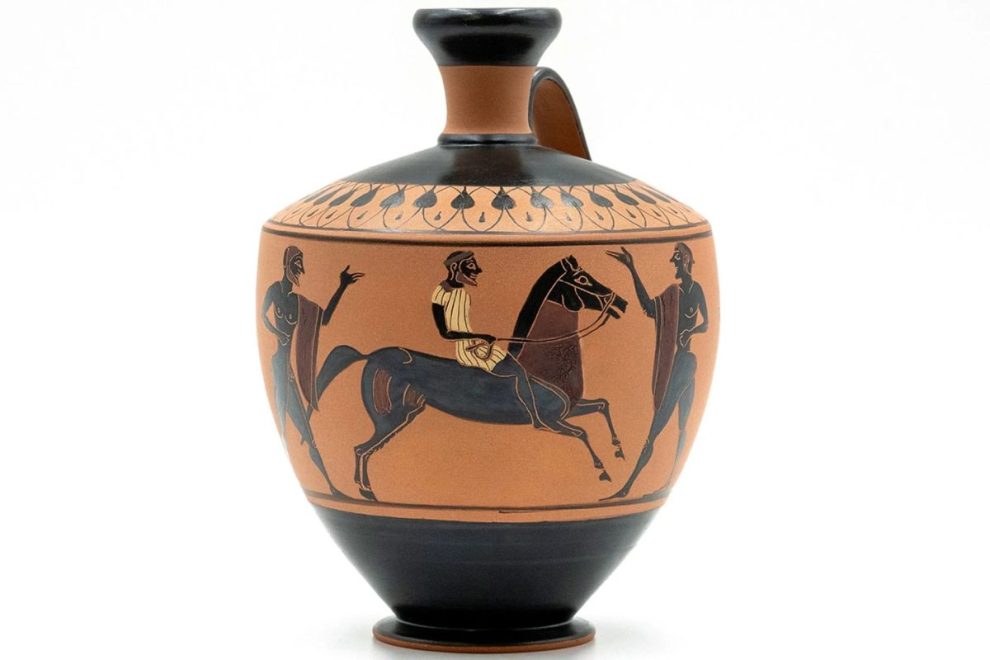
Notable Centers and Artists of Ancient Greek Vase Painting
In ancient Greece, Athens became the top place for vase painting. It was known for its Attic style. Athenian vase painters in the 6th century BCE used new ways to make designs. They often drew stories from myths and added geometric patterns. At the same time, places such as Corinth and South Italy had their own ways of making pottery. They each added something new to the art. People today look at these Greek vases and see that many of them were made by artists whose names we do not know. These vases show the art skill and the trade between Athenian, Corinth, and South Italy artists during that time. They help us know more about Greek culture and pottery in ancient Greece.
The Potters and Painters of Athens
Athenian potters and vase painters had a big part in shaping ancient Greek pottery, most of all in the 6th century BCE. They used new ideas in the firing process, such as working with black slip and adding clean geometric patterns. This new way of making things changed Greek art. Famous vase painters like Exekias and Oltos put myth stories right on the pottery. They showed what people at that time believed and did. These artists paid a lot of attention to details. They painted human figures, such as Achilles and Odysseus, on many vases. At that time, Athens became known as a great place for art. This made their city stand out for people who liked good pottery and Greek art.
Regional Schools and Distinctive Features
Different regional schools in ancient Greek vase painting show their features. These differences come from the local culture and the things they had to work with. Attic pottery is well-known for its skillful ways of making and for its detailed decoration. It often shows gods, like Zeus, and heroes, such as Heracles, in strong and lively scenes. In Greek vase painting, Corinthian vases look different. They use black-figure techniques and have geometric patterns that help the vase look balanced and graceful. Another big difference is in how the pottery is fired and the colors used. These changes show how each group could adjust to where they lived, the materials they used, and the style of decoration and motifs they picked. All of this was common in Greek art and be seen in many old vases.
How do Experts Attribute Unsigned Vases to Specific Artists?
Experts look at how a vase is made, the design, and the pictures on it (iconography) to guess which artist made it when there is no signature. They compare these unsigned vases to others that do have a name on them. The experts also think about the time and place the vase was made. All these clues help them find features that show who the artist could be.
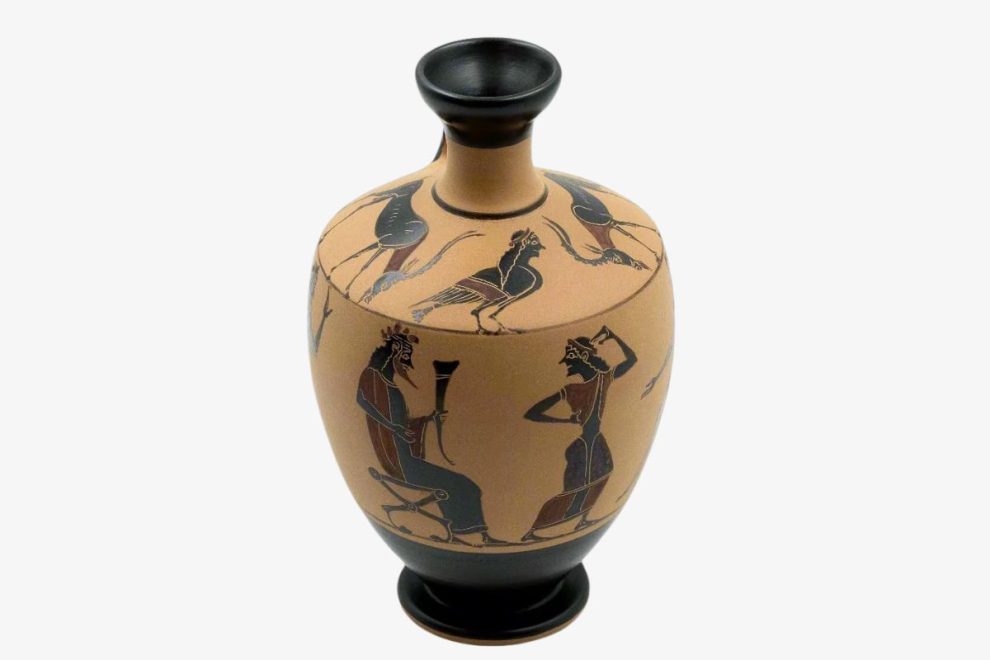
Legacy, Rediscovery, and Modern Scholarship
The story of ancient Greek vase painting still grabs the attention of many people today. It shows how much it has shaped both art and the study of history. People have found large quantities of Greek vases over the years. Because of this, modern artists and experts want to learn more about the way the Greeks made and decorated a vase. They look closely at how the firing and painting was done. Recent research, like work from Cambridge University Press and Oxford, shows how important the pictures and motifs on these vases are. The iconography used lets us get to know what daily life was like for the ancient Greeks. We can also learn about their rituals and the world they lived in, just by taking a look at the art on a Greek vase. This gives us an even better idea of why vase painting was such a big part of their culture.
The Impact on Western Art and Archaeology
Ancient Greek vase painting has had a big effect on art in the West. It has helped set the way people see beauty and choose art subjects. You can find a lot of detailed pictures and great skills in these vases. These show what life, faith, and rules were like for the ancient Greeks. There is a lot to learn about the way people lived every day, how they believed and what they thought was right or normal. When new vases are found, they become very important for those who study Greek art history. These archaeological finds help us know more about old skills, different styles from many places, and how cultures came together in that time. Ancient Greek pottery and Greek vase painting still have an effect on artists and those who study art right now. The beauty and meaning of Greek pottery carry on, showing that what the ancient Greeks did has a place in the lives and minds of people even today.
Recent Research and Conservation Efforts
Improvements in research and care for the arts have helped us better understand Greek vase painting. New steps like imaging tools and checking the chemicals in items help experts figure out the iconography on vases. These methods also help find tiny impurities in the clay used in Greek pottery. People working to save old vases now work hard to keep these fragile pieces in good shape. They use ways that respect how the original firing process was done. Work done by teams in places like Los Angeles and Cambridge has led to a fuller study of Greek pottery and Greek vase painting. Because of these group efforts, the story of these items—and what they can teach us—is being kept alive. This helps make sure the vases, their iconography, and all their pottery forms, will continue to mean something to us and the people who come after us.
Ancient Greek Vases Found Outside Greece
Ancient Greek pottery has been found in many places outside of Greece. These vases have been seen in South Italy and even as far away as Los Angeles. They give us a good look into the trade and cultural exchanges from that time. Greek art and pottery were very important to people, and you can see Greek motifs and iconography used in other places. This shows how much people admired Athenian style and wanted these pieces in their daily life. Finding ancient Greek pottery in Italy or outside Greece helps us understand the influence of Greek art, even in places far from where it started.
The world of ancient Greek vase painting is full of detail and meaning. These vases are not just for decoration. Each vase gives us a look into the daily life, beliefs, and rituals of the ancient Greeks. The stories shown in ancient Greek vase painting help us know what the society cared about and what they wanted from Greek art. These ceramic works have a lasting impact that helps modern experts learn more about Greek art, history, and their culture. As more people study these vases, new ideas will come up. In the end, these Greek vase paintings help connect the past with our lives now.
